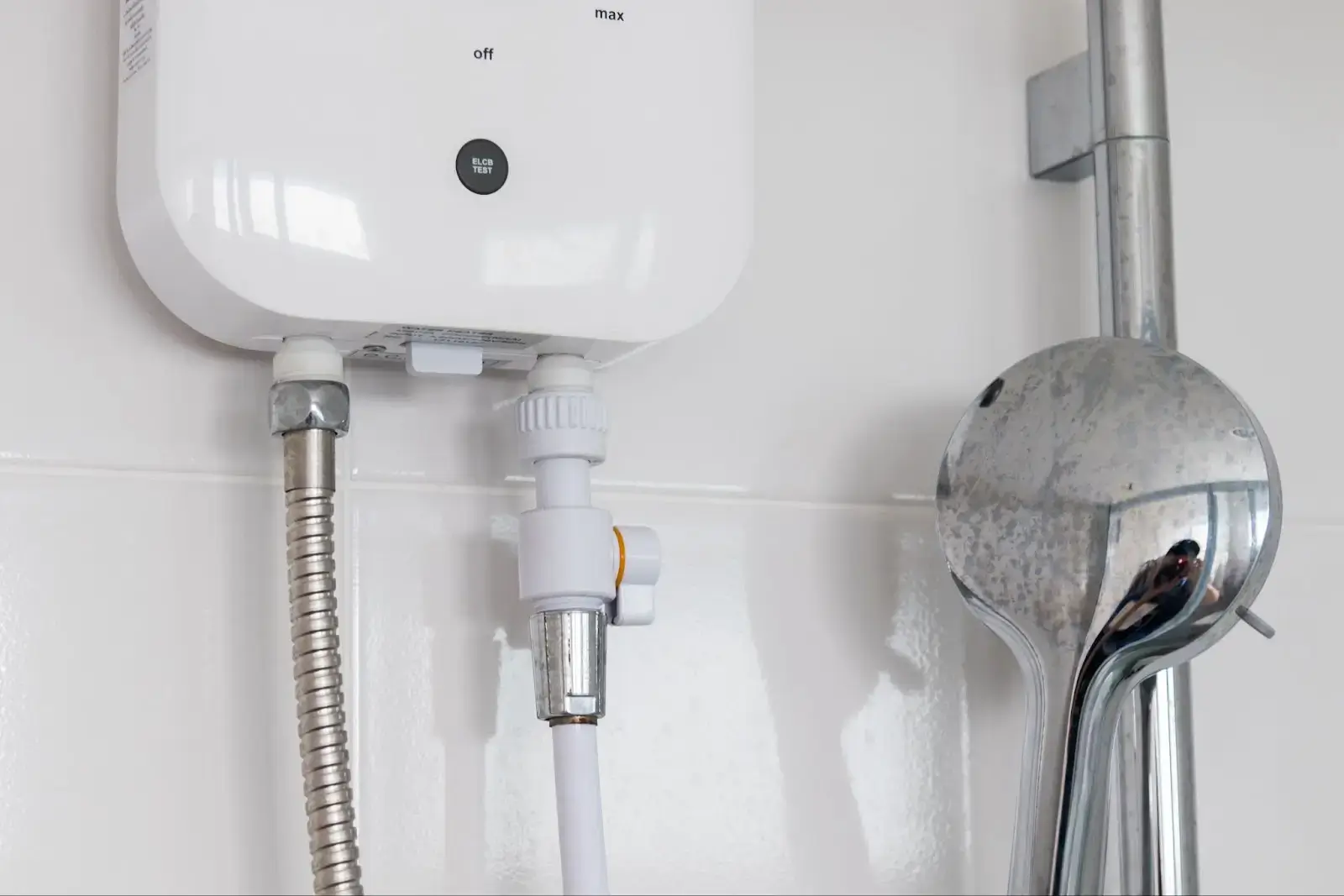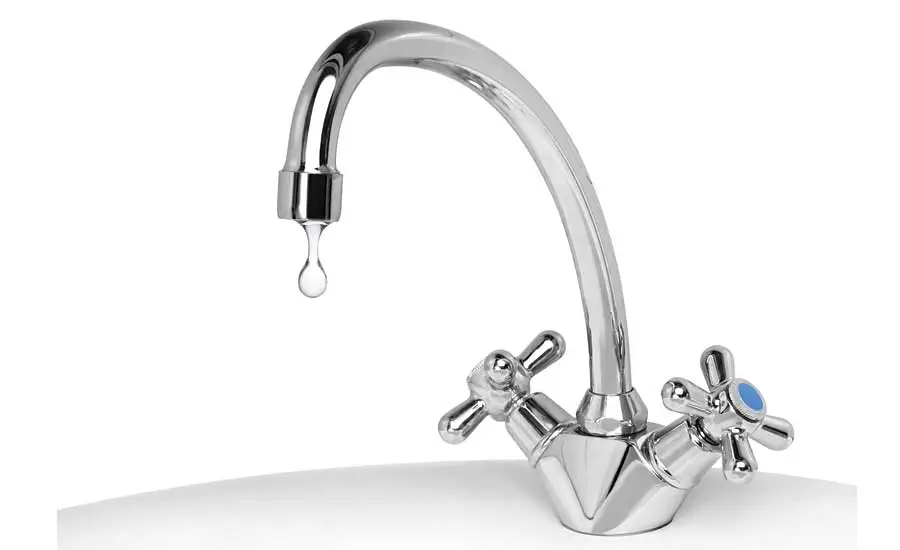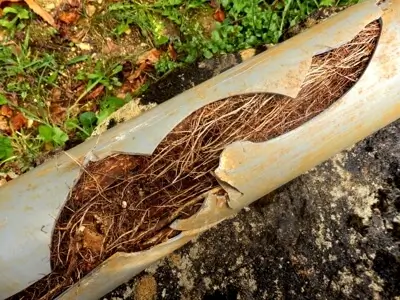Ductless mini-splits: they're sleek, efficient, and a game-changer for modern homes. But like all good things, they sometimes come with quirks unique to their design.
If you've found yourself scratching your head over a mini-split issue, you're not alone. In this guide, we'll tackle the most common challenges faced by mini-split users and offer practical troubleshooting steps.
Get ready to become your home's mini-split maestro, armed with insights and tips. Let's jump right in and keep that comfort flowing uninterrupted!
Mini-Split Issues (with Solutions)
Let's unravel some of these common anomalies and explore solutions to keep your system humming smoothly:
- Uneven Room Temperatures
- Refrigerant Leaks from Flare Connections
- Limited Range of Airflow
- Mounted Unit Vibrations
- Condensation Issues Inside Units
- Difficulty Accessing Filters
- Communication Errors Between Units
- Swing Motor Malfunctions
Uneven Room Temperatures
The Issue:
At the heart of a mini-split system is the promise of delivering consistent temperatures throughout various spaces. However, uneven room temperatures can be a hiccup that users sometimes face.
This inconsistency arises mainly because mini-splits operate with individual units designed for specific rooms or zones. Just imagine: you're cozily wrapped in warmth in your living room, but the moment you step into your bedroom, it feels like the Arctic tundra. This uneven distribution can stem from multiple reasons, such as miscalibrated settings, a room's exposure to sunlight, or even the unit's placement.
Why It's a Concern:
Uneven temperatures don't just affect your comfort; they can also mean your system isn't running efficiently. Energy could be wasted in overcooling or overheating certain areas, which might reflect in your monthly utility bills. Moreover, constantly adjusting the settings can wear out the system prematurely.
Possible Solutions:
- Check the Settings: Start with the basics. Ensure that each unit's thermostat settings are appropriately calibrated for the specific room or zone. Remember, what feels comfortable in a sun-soaked room might not be suitable for a shaded one.
- Unit Placement Matters: The positioning of the indoor unit can play a significant role in how effectively it cools or heats a room. Ensure it's not obstructed by furniture or curtains. It should have a clear path to distribute air evenly.
- Regular Maintenance: Sometimes, the unit might be working harder due to clogged filters or blocked vents. Regularly cleaning and maintaining the unit can help in consistent temperature distribution.
- Assess Room Insulation: If certain rooms remain too cold or too warm, it could be due to poor insulation. Consider getting an insulation check. Properly insulated rooms can help maintain desired temperatures with ease.
- Consult a Professional: If you've tried the above steps and still face issues, it might be time to call in the experts. Professionals like Sunset Heating & Cooling can assess your system, identify any inefficiencies, and recalibrate settings or recommend solutions specific to your home's layout and needs.
Remember, the beauty of mini-splits lies in their ability to customize temperatures for different zones. With a bit of troubleshooting and regular care, you can ensure every room in your home is just the right kind of cozy.
Refrigerant Leaks from Flare Connections
The Issue:
Ductless mini-splits have a distinct setup, different from centralized systems. One unique feature is their use of flare connections. These are essential components that connect the refrigerant lines between the indoor and outdoor units. Although efficient, these connections can sometimes be a culprit behind refrigerant leaks. A seemingly small drip can gradually morph into a significant issue, affecting the system's performance.
Why It's a Concern:
Refrigerant is the lifeblood of any cooling system. A leak doesn't just mean the system loses its cooling efficiency; it also poses environmental concerns and could lead to higher energy bills. Plus, the continuous loss of refrigerant places undue stress on the compressor, risking its longevity.
Possible Solutions:
- Regular Visual Inspections: Make it a habit to inspect the area around the flare connections periodically. If you notice any wet or oily spots, it might be an indicator of a leak.
- Tighten the Connections: Over time, flare connections can loosen due to temperature fluctuations and vibrations. Ensure they're tightened to the manufacturer's specifications. Over-tightening can be as problematic as leaving them too loose.
- Use Sealants: Consider using high-quality sealants specifically designed for refrigerant lines. This can provide an added layer of protection against potential leaks.
- Maintain Refrigerant Levels: If you suspect a leak, check the refrigerant levels. Consistently low levels are a clear sign of an issue. Refilling the refrigerant isn't a long-term solution; finding and fixing the leak is crucial.
- Seek Professional Help: Addressing refrigerant leaks isn't a typical DIY task. If you're unsure or want to be certain, calling in professionals, like the team at Sunset Heating & Cooling, is advisable. They can thoroughly check the connections, ensure the system is leak-free, and optimize its performance.
By staying vigilant and proactive, you can ensure flare connection leaks don't dampen the efficiency and effectiveness of your mini-split system.
Limited Range of Airflow
The Issue:
Ductless mini-splits have a different design compared to traditional HVAC systems. One noticeable difference is how they distribute air. While they're efficient, the indoor units might not cast air across large spaces evenly. This can result in some areas feeling too warm or too cool, often termed as "hot" or "cold" spots.
Why It's a Concern:
Comfort is paramount in any living space. Inconsistent temperatures within a room can be both uncomfortable and energy-inefficient. If the system continually tries to correct these discrepancies, it might work harder, leading to increased wear and higher energy bills.
Possible Solutions:
- Reposition the Unit: The location and angle of the indoor unit can affect airflow. Consider adjusting its position or angle for more optimal air distribution.
- Use Oscillating Fans: Place oscillating fans in the room to aid in dispersing the air more evenly. They can help in circulating the air from the mini-split throughout the room.
- Review Room Layout: Large furniture or drapes can obstruct airflow. Ensure that there are no significant obstructions in the direct path of the air being emitted from the unit.
- Check Air Louvers: The air louvers on the indoor unit help direct airflow. Ensure they're clean and functioning correctly. Adjust them if needed to redirect the air more effectively.
- Seek Expert Input: If you've tried multiple solutions and still face issues, it might be time to get an expert's opinion. A professional can assess the room's layout, the mini-split’s position, and suggest adjustments for better efficiency.
Understanding the nuances of how mini-splits distribute air can help you maximize their efficiency. By taking a few strategic steps, you can ensure every corner of your room remains cozy and comfortable.
Mounted Unit Vibrations
The Issue:
Ductless mini-splits are designed to be sleek and unobtrusive. Mounted onto walls, they're intended to blend seamlessly into room decor. However, when not installed correctly, these units might vibrate more than they should. This isn't just an annoying hum in the background; it's a sign of potential problems.
Why It's a Concern:
Continuous vibrations can lead to several concerns. First, the noise can be disruptive to your peace and quiet. Over time, these vibrations can also strain the unit, causing wear and reducing its lifespan. Additionally, the constant movement might weaken the wall structures or the mount itself, risking potential damage or even a unit fall.
Possible Solutions:
- Inspect Mounting Bolts: Start by checking the bolts holding the unit. They should be tight but not overtightened, which can also lead to vibrations.
- Use Rubber Padding: Installing rubber padding between the unit and the mounting bracket can help dampen vibrations, reducing noise and strain on the wall.
- Check the Unit's Balance: An uneven unit can vibrate more. Ensure that the unit is perfectly level. Adjust as necessary.
- Inspect for External Causes: Sometimes, external factors like a loose component inside the unit can cause vibrations. Open the unit's front panel and check for any visible issues.
- Seek Professional Help: If you've addressed the obvious culprits and the problem persists, it might be time for a professional evaluation. An HVAC specialist can pinpoint the cause and offer a more permanent solution.
Remember, while some mild vibration is normal, excessive shaking isn't. Addressing this issue not only ensures a quieter home but also prolongs the life of your mini-split and keeps your walls damage-free.
Condensation Issues Inside Units
The Issue:
Mini-split systems, with their compact design, might face a challenge that larger systems often avoid: condensation buildup inside the unit. You might notice water droplets forming, or in severe cases, water leakage.
Why It's a Concern:
Condensation inside the unit isn't just about water spots or a little dripping. Prolonged water buildup can damage internal components. Plus, stagnant water can become a breeding ground for mold and bacteria, impacting air quality.
Possible Solutions:
- Check the Drain Line: Start by ensuring the drain line is clear. Sometimes, a simple blockage, like dust or debris, can cause water backup.
- Inspect the Unit's Tilt: The indoor unit should have a slight tilt towards the drain line. This helps water flow out easily. Adjust if necessary.
- Clean the Drain Pan: Beneath the evaporator coil, there's a pan that collects condensation. Clean this pan regularly to prevent water stagnation.
- Use a Condensate Pump: If drainage remains an issue due to the unit's position, consider installing a condensate pump. This helps in pushing out the water.
- Regular Maintenance: Often, condensation issues arise from neglect. Regular cleaning and maintenance can prevent many of these problems before they begin.
- Consult an Expert: If you've tried troubleshooting and still face issues, get an HVAC professional on board. They can identify and rectify deeper problems causing the condensation.
A mini-split should provide comfort without the added worry of water damage. Addressing condensation issues promptly ensures the longevity of the system and maintains a healthy indoor environment.
Difficulty Accessing Filters
The Issue:
Certain mini-split models have a design where the filters aren't easily accessible. This can be a hurdle for homeowners trying to maintain the system.
Why It's a Concern:
Filters play a crucial role in trapping dust, pollen, and other pollutants. If accessing them is a challenge, homeowners might skip regular cleaning. Over time, this neglect can reduce air quality and hamper the system's efficiency.
Possible Solutions:
- Consult the Manual: Every model is different. Refer to your mini-split's user manual. It might provide insights or techniques for easier filter access.
- Use the Right Tools: Sometimes, a simple tool like a pair of needle-nose pliers or a flat-head screwdriver can help in prying open tricky filter compartments.
- Flexible Brushes: Invest in a flexible brush designed for ductless system maintenance. Its flexible nature can make reaching and cleaning filters in tight spots easier.
- Regular Professional Maintenance: If you find it too challenging, consider scheduling more frequent professional cleanings. They'll have the tools and know-how to access and clean even the most challenging filters.
- Consider a Redesign: If accessibility remains a consistent problem, consult with an HVAC expert. They might suggest slight modifications to make filter access more manageable in the future.
- Upgrade to a User-Friendly Model: If your current system's design consistently hinders maintenance, consider upgrading. Many modern models prioritize user-friendliness, including easy filter access.
Remember, regular filter maintenance is essential for optimal air quality and system efficiency. If accessing your filters remains a hassle, don't hesitate to seek professional guidance to ensure the well-being of your mini-split system.
Communication Errors Between Units
The Issue:
Mini-splits work as a team, with indoor and outdoor units communicating seamlessly. But sometimes, this conversation gets interrupted.
Why It's a Concern:
When these units can't "talk" to each other, your system can malfunction. This miscommunication can affect temperature settings, leading to discomfort, or cause the system to shut down altogether.
Possible Solutions:
- Power Cycle Both Units: Turn off both the indoor and outdoor units. Wait a few minutes. Turn them back on. This simple step can reset the communication between them.
- Check the Wiring: Ensure that the communication wires between the indoor and outdoor units are properly connected. Loose or damaged wires can disrupt communication.
- Inspect for Damage: External factors like weather or pests can damage the wires. Examine them for any signs of wear, nibbling, or corrosion.
- Software Updates: Just like other modern electronics, mini-splits might need occasional software updates. Check with your manufacturer or technician if there's a new update available.
- Replace Faulty Components: If a specific part, like a communication board, is faulty, it might need replacement. A professional can help identify and replace malfunctioning components.
- Professional Diagnosis: If you're unable to pinpoint the communication issue, call in a professional. They'll have tools and expertise to diagnose and address the problem swiftly.
Clear communication between your mini-split's units is vital for efficient operation. If you notice inconsistent performance or any unusual behavior, it's essential to investigate and address communication errors promptly.
Swing Motor Malfunctions
The Issue:
The swing feature is a great addition to many mini-splits. It moves the air evenly around a room. But, like all parts, the motor driving this feature can sometimes hit a snag.
Why It's a Concern:
When the swing motor doesn't work right, air distribution suffers. This can lead to uneven room temperatures and reduce overall comfort. Plus, a stuck swing motor might strain other parts of the system.
Possible Solutions:
- Manual Reset: Turn off your unit. Gently push the swing blade to its original position. Then, turn the system back on. This might reset the motor.
- Clean the Unit: Dirt or debris might block the swing mechanism. Ensure the area around the swing blade is clean and free from obstructions.
- Inspect for Obvious Damages: A visible dent or misalignment can hinder the motor. Look for any physical signs of damage and rectify them.
- Lubricate the Motor: Over time, the motor can become stiff due to lack of lubrication. Applying some safe lubricant, as suggested by the manufacturer, can smooth its operation.
- Check Electrical Connections: Ensure that all wires connected to the swing motor are intact. A loose connection might be the culprit.
- Seek Professional Help: If the problem persists, it's wise to call in a technician. They'll be equipped to diagnose the root cause and provide a lasting solution.
A malfunctioning swing motor might seem like a small issue. However, addressing it promptly ensures a comfortable, even temperature throughout your space. Don't let a little hiccup disrupt your comfort.
Closing Thoughts
Understanding and troubleshooting common issues with mini-split systems can save you time and frustration. However, when in doubt, it's always best to seek expert advice.
At Sunset Heating & Cooling, we pride ourselves on offering top-notch mini-split services, whether you need installation, maintenance, or repairs. With our expertise, you can ensure your system operates efficiently and lasts longer.
Don't let mini-split hiccups disrupt your comfort—give us a call at (503) 500-5866 and let our team handle the rest. Stay cool and cozy with Sunset!







